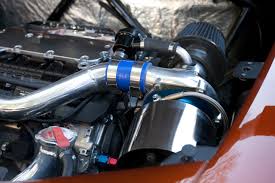Looking for information on Australian cell hho nitrogen? Want to know if this really is a viable alternative to fossil fuels? Read our guide for more facts & information…
With the inexplicable damage that we have done to the environment through the over consumption of fossil fuels and the catastrophic predictions that are being made about global warming and its effects, the world is looking at alternative sources of energy that do not produce the harmful greenhouse gases emitted by fossil fuels. A viable alternative is available in the form of Australian cell HHO nitrogen
Is an Australian cell HHO nitrogen system right for you?
These cells use the hydrogen on demand approach as opposed to the high-pressure hydrogen-storage scheme. In the hydrogen-on-demand system, hydrogen gas is stored safely in the compact form of water till you need to use it. Since one gallon of water is equal to 1,800 gallons of HHO gas, the amount of water needed to make a significant amount of hydrogen will be comparatively small. In most Australian cell HHO nitrogen kits, the electricity used to power the cell, which in turn converts water into hydrogen comes from the alternator and the batteries of the vehicle’s alternator
Does The System Really Work?
Skeptics are of the opinion that the energy needed to produce nitrogen from water is equal to or more than the energy produced by the burning of the HHO engine. Several experts also believe that the over-simplification of the kits by overly enthusiastic establishments mars the efficacy of the system. These companies do not take into account the advanced tuning that will have to be incorporated into the system to see results.
The results that you achieve from an Australian cell HHO nitrogen system will largely depend on the efficiency of the HHO cell generator and the efficiency of your vehicle engine. If the engines of our vehicles were designed optimally there would be no need for HHO to burn the primary fuel efficiently and completely.
The way our cars are designed only one third of the fuel burned is used to power the wheels while the rest is simply wasted because it dissipates through the cooling system and exhaust. A good Australian cell HHO nitrogen will be able to produce 3 liters of HHO per minute, which is just enough to run a lawn mower. So in essence the hydrogen produced by the Australian cell HHO nitrogen system is not used to power the vehicle rather it is utilized to speed up the combustion of the primary fuel making it more efficient.
The HHO producing capacity of the system can be increased through the addition of an acid base which decreases the electrical resistance of water. The addition of the catalyst helps in the production of the desired amount of HHO with a lesser amount of electricity.





